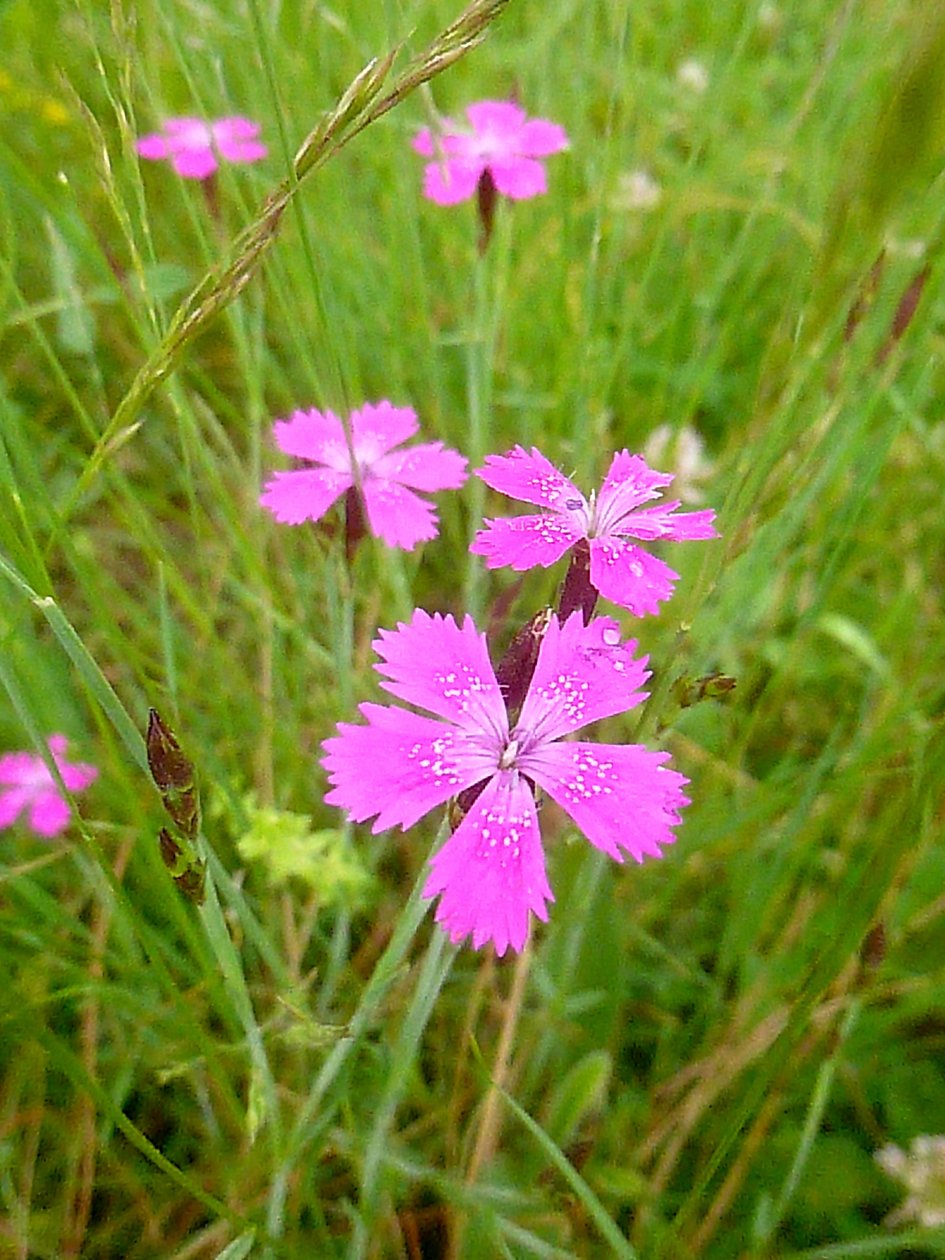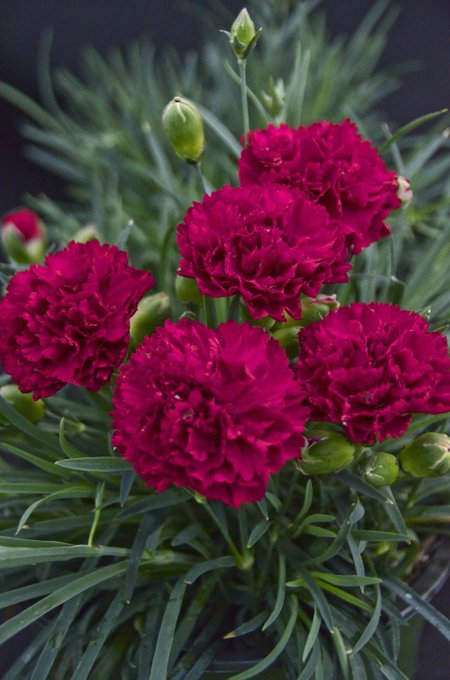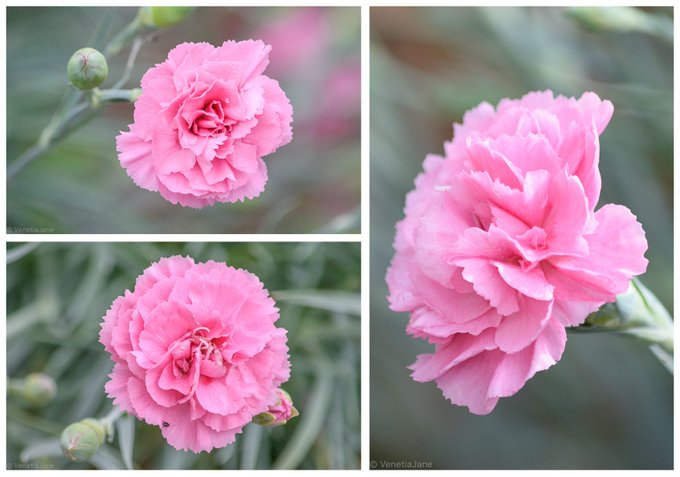
Dianthus, a name that evokes thoughts of delicate beauty and soft fragrance, encompasses a delightful group of flowering plants. Often referred to as pinks or carnations, depending on the variety, these cheerful blooms come in a vibrant tapestry of colors and fill gardens with their charm from early summer through fall. But are dianthus for you? Worry not, fellow plant enthusiast, for this guide will be your compass, navigating you from the very first seed to a flourishing display of dianthus magic.
This post may have affiliate links. This means that sometimes when you click a link on our site and make a purchase on Amazon, we may earn a small commission at no additional cost to you. We only recommend products we truly believe in, and your support helps keep us running!
Selecting Dianthus Varieties
The dianthus family boasts a diverse cast of characters, each with its own unique quirks. Here are a few popular options to consider:
Border Pinks (Dianthus deltoides)

These low-growing perennials, with fringed petals in shades of pink, red, and white, are ideal for edging flower beds or creating vibrant borders.
Carnations (Dianthus caryophyllus)

The quintessential carnation, with its large, densely packed blooms, is a favorite for cut flowers. While traditionally seen in reds and pinks, modern varieties offer a spectrum of colors.
Pinks (Dianthus plumarius)

These fragrant perennials feature single or double flowers in shades of pink, red, white, and even bi-colors. They are known for their exceptional tolerance of neglect, making them perfect for beginner gardeners.
Sun Seekers: Dianthus, across the board, are sun-worshippers. Aim for at least 6-8 hours of direct sunlight per day for optimal growth and flowering.
Planting Power: Sowing Seeds or Starting with Transplants
There are two main paths to take when introducing dianthus to your garden:
- Seed Sowing: For the more patient gardener, sowing seeds directly outdoors in late fall or early spring is an option. However, germination can be slow, and results may vary.
- Transplant Power: Opting for established seedlings from your local nursery offers a quicker route to blooms. Look for healthy, vibrant plants with no signs of wilting or disease.
Top Tip: When transplanting seedlings, ensure you gently loosen the root ball to encourage healthy root development in their new home.
Building a Haven: The Perfect Soil for Dianthus Delight
Just like Goldilocks and her porridge, dianthus prefer their soil not too wet, not too dry, but just right. Here’s how to create the ideal environment:
- Drainage is Key: Dianthus despise soggy feet. Opt for well-draining soil, and if your soil is heavy clay, consider amending it with sand or perlite to improve drainage.
- The pH Party: Dianthus thrive in slightly alkaline soil with a pH level between 6.5 and 7.5. A simple soil test kit can help you determine your soil’s pH and make necessary adjustments with lime, if needed.
Food for Thought: While dianthus aren’t heavy feeders, a light application of a balanced fertilizer during the growing season can give them a blooming boost.
Watering Wisdom: Keeping Your Dianthus Hydrated
Finding the right watering balance is crucial for dianthus success. Here’s a helpful approach:
- Soak and Dry: Aim to water deeply, allowing the water to reach the roots, and then wait for the top inch of soil to dry out before watering again. Overwatering is a common pitfall, so err on the side of less frequent watering.
- Mulch Magic: Applying a layer of organic mulch around the base of your plants helps retain moisture in the soil and reduces the need for frequent watering. Bonus points for weed suppression!
Signs of Thirst: Wilting leaves are a telltale sign that your dianthus needs a drink.
Deadheading Delights: Encouraging Repeat Blooms
Dianthus are naturally repeat bloomers, but a little deadheading can go a long way in maximizing their floral display:
- Snip, Snip: After a flower fades, use sharp pruners to remove the spent bloom stem down to a healthy set of leaves. This encourages the plant to focus its energy on producing new flower buds rather than setting seed.
- The Shearing Surprise: For a more dramatic approach, you can give your dianthus a light shearing after the first flush of blooms. This will encourage bushier growth and potentially trigger a second wave of blooms in late summer.
Remember: Don’t be afraid to deadhead throughout the blooming season to keep your dianthus looking their best.
Winter Woes: Protecting Your Dianthus from the Cold
Depending on your climate and the specific dianthus variety, winter protection may be necessary. Here are some pointers:
Perennial Powerhouses: Border pinks and pinks are generally winter hardy in most zones. However, providing a light
- Tender Transplants: Carnations, being less cold-tolerant, are typically grown as annuals. However, if you’re determined to keep your favorite carnation alive over winter, you can try digging it up and potting it before the first frost. Bring it indoors to a sunny location and water sparingly throughout the winter.
Spring Spruce Up: As soon as the danger of frost has passed in spring, remove any winter protection and give your dianthus a light trimming to remove any dead or winter-damaged foliage.
Pest Patrol: Keeping Unwanted Guests at Bay
While dianthus are generally low-maintenance when it comes to pests, a few common garden critters can occasionally cause trouble:
- Aphids: These tiny sap-sucking insects can distort new growth. A blast of water from the hose can often dislodge them, or you can use insecticidal soap for a more targeted approach.
- Slugs and Snails: These slimy munches love to feast on tender foliage. Keeping the garden free of debris and using organic slug traps can help deter them.
Early Intervention is Key: The sooner you identify and address a pest problem, the easier it is to control and minimize damage to your dianthus.
Disease Defense: Maintaining Dianthus Health
Fungal diseases like powdery mildew can sometimes affect dianthus, particularly in humid conditions. Here’s how to keep your plants healthy:
- Air Circulation is Key: Ensure good air circulation around your plants by avoiding overcrowding.
- Water Wisely: Water at the base of the plant rather than overhead watering, as this can promote fungal growth.
- Fungicidal Friends: If you notice signs of powdery mildew, such as white powdery spots on leaves, a fungicide specifically labeled for dianthus can help control the problem.
Prevention is the Best Medicine: By providing your dianthus with the right growing conditions and maintaining good garden hygiene, you can significantly reduce the risk of disease.
